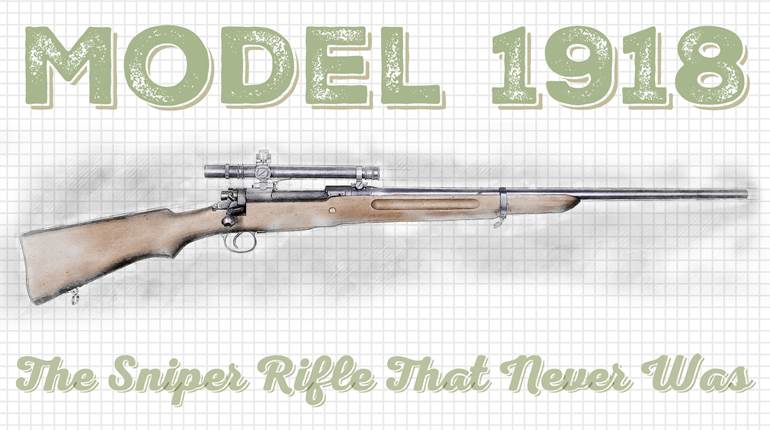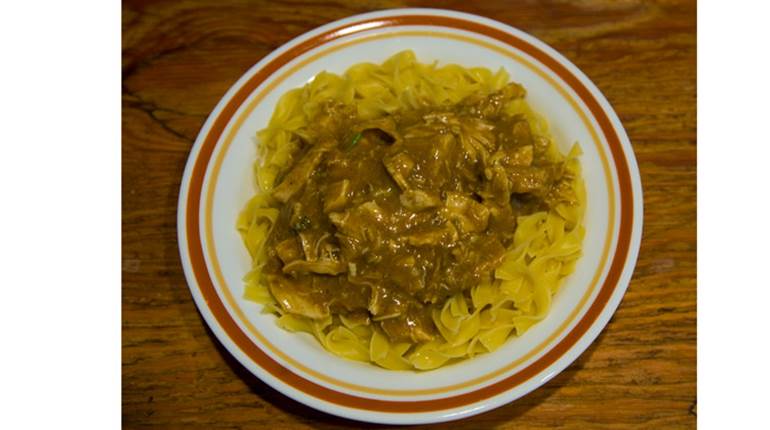
It has been called, “The gun that won the West.” It has also been the title star of a motion picture. Cussed and discussed, this rifle has been the subject matter of countless campfires, hunting camps and saloons. Once praised as being one of the slickest lever-actions, it is equally disdained as a weak rifle incapable of handling cartridges with enough power to knock off a mouse. Nonetheless, the Model 1873 Winchester is an iconic rifle of the American west.
The ’73 was the culmination of a 25-year evolution of the lever-action repeating rifle. It began with Walter Hunt’s Volition Repeating Rifle, which featured a tubular magazine and a complex and relatively fragile linkage system. That rifle’s patent was purchased a year later by Lewis Jennings. Jennings improved the linkage somewhat, producing a few rifles through the firm of Robbins & Lawrence of Windsor, Vt., until 1852. Horace Smith and Daniel Wesson bought the patent from Jennings and acquired Jennings’ shop foreman, Benjamin Tyler Henry, to oversee further improvement and manufacturing, calling their new company the Volcanic Repeating Arms Company.
One of the first improvements was Smith’s incorporation of a copper case with a priming compound held within the folded rim of the cartridge to replace the “Rocket Ball” ammunition, which was a Hunt invention. Rocket Ball ammunition held the powder charge within the hollow base of the bullet, and like all forms of so-called “caseless” ammo it has never proven to be reliable or accurate. The cartridge Smith developed became the .22 Short. The rifle and cartridge had limited success, because of the lack of power and reliability of its ammo. Eventually the Volcanic Repeating Arms Company produced a lever-action pistol to go with its rifle.
The largest stockholder in this fledgling firm was a shirt maker from New Haven, Conn., Oliver Fischer Winchester. Wesson left Volcanic in 1856, and Smith followed him eight months later to form the Smith & Wesson Revolver Company. Volcanic was in receivership, and Winchester-who was reputed to have a keen eye for a bargain-bought controlling interest in the company in 1857, renaming it the New Haven Arms Company. Henry remained with Winchester and continued to develop Smith’s cartridge concept on a larger, .44-caliber scale. He redesigned the rifle to handle the powerful ammunition, culminating with the 1860 Henry rifle. The rifle saw a fair amount of service with the Union army during the Civil War.
When the war was over, Winchester renamed the firm the Winchester Repeating Arms Company and set about improving the Henry rifle. The 1866 model featured a bronze alloy frame, an improved magazine and a walnut fore-end to protect the shooter’s off-hand from heat during firing. It retained the .44 Rimfire chambering of the Henry.
The year 1873 saw further improvement with a new steel frame with sideplates that made it easier to access the rifle’s innards for cleaning, along with a new chambering. This new cartridge had a separate “central-fire” primer with a heavier, stronger case and more powder to increase the velocity of the 200-grain bullet. Its name was the .44-40 Winchester Center Fire or as it is more commonly known, the .44-40 WCF.
As the western prairies became highways for fortune-seeking settlers, the 1873 Winchester became wildly popular. The rugged, no-nonsense rifle found itself in the hands of market hunters, in the scabbards of cowboys and under the driver’s seat of stagecoaches through the remainder of the 19th century and into the 20th. It was no target rifle. Most 1873s could barely keep five shots on a dinner plate at 100 yards, but that was accurate enough to kill a deer or put down a bad guy. It made up for its lack of accuracy and long-range power by offering a higher volume of shots. During its 46-year run some 720,000 Model 1873s were produced. If that number seems small by modern standards, recall that the country’s population was only 76 million by the turn of the 20th century-about a quarter of what it is today.
Twelve years after its debut Winchester began making the “One of One Thousand” grade of the 1873. Rifles of this grade were test-fired at the factory, and those that met a certain accuracy level were fitted with set triggers and fancy walnut stocks with checkering and engraving on the metal work. A One of One Thousand Model 1873 would have set you back $100 at the time. Regular 1873s sold for about $18. Today a rusty relic 1873 will fetch as much as $3,000, and a One of One Thousand? The sky is the limit; count on at least six figures. One of One Hundred 1873s were also made with fewer embellishments at about 40 bucks a copy then. Like the rest, its current value will give most of us a nose bleed. Interestingly, only 136 One of One Thousand grade 1873s were made, and just eight One of One Hundred rifles left New Haven.
The last 1873 model left the factory in 1919. But during the late 1980s and ’90s a tremendous resurgence in interest in the old rifle occurred with the blossoming of cowboy action shooting. Thousands of people clamored for shootable copies of the century-plus-old rifles. Winchester-which has undergone several changes and reorganizations over the years-has been blessed with products that were superior to its competition in many ways, as well as being cursed with business sense and practices that have doomed it. The company largely ignored the new shooting sport for some time. There were reasons-probably good ones at the time-for this position. After all, what company wants to take a step back with its products? Most look toward the future and see improvements in both design and manufacturing. But this is the gun industry, and its customer base is different than with most products. Gunners tend to be very traditional and hold strong emotional ties to their firearms.
Several gunmakers from Europe stepped in and have been making replicas of the Model 1873, as well as many other 19th century firearms. Since these replicas tend to be pretty authentic and of excellent quality, they have become wildly popular in the cowboy action circuit. I have a couple of them and shoot them regularly.
As mentioned earlier, Winchester has undergone a number of changes and reorganizations since it first saw light in 1866. The latest iteration to rise from the ashes utilizes the original company name-Winchester Repeating Arms. Though under the FN/Browning umbrella, the modern Winchester is run by gun guys who know the company’s history and appreciate the undying loyalty of its customers. Dealing with the challenges of modern manufacturing like skyrocketing material and labor costs, litigations and such, the new-old company is nonetheless making a concerted effort to provide the products its customers crave. It’s a tough nut to crack.
Winchester has enjoyed success in reintroducing many of its iconic models like the 1886, 1892, 1895 and the Model 70 bolt-action rifles. Even the Model 94 has been reborn. Now it has finally gotten around to providing the American cowboy wannabe with the one thing we all want-a Model 1873 marked with the ever-recognizable Winchester trademark.
The New Haven plant is gone. These new renditions of classic rifles are made by Miroku in Japan, as a nod toward the reality of the globalization of business. Those who might sniff in disdain at a Japanese-made Winchester should take a closer look at what is coming out of that factory. I’d say it’s on par with New Haven at its peak. These rifles are far better than those that came out of New Haven just before its demise.
And so it is with the Model 1873. The new 1873 is pretty faithful to the original. Happily, the designers and brass at WRA have won the battle over the tang safety on new lever-guns. You won’t see one on the 1873. What you will see is an additional passive safety in the bolt that prevents the rifle from firing if it is dropped on the muzzle. Another design departure is a more robust interlock of seating the lever before permitting the trigger to operate. This is necessary because the toggle-link lockup of the ’73 needs to be a bit over center to remain closed during firing. I found this a bit distracting during accuracy tests, but again, this is a ’73. It never was designed to be babied. Run it hard, and run it rough; it won’t fail or stutter.
For now, the 1873 is available only in .38 Spl./.357 Mag. chambering, in deference to the target customer base. The widespread availability of ammo and components in this caliber, along with its lack of recoil makes it the most popular caliber in that circuit. I have been assured by Scott Grange at Browning/Winchester that the original .44-40 WCF chambering is forthcoming, probably along with .45 Colt, which the rifle was not originally chambered for. Due to a lack of popularity, I doubt that other chamberings like .38-40 WCF and .22 LR will be made.
Two versions are available initially, an 1873 Short Rifle featuring a 20-inch round barrel on a blued receiver with the tang drilled and tapped for a peep sight at an MSRP of $1,299, and a Model 73 Sporting Rifle that differs in that the receiver is color case-hardened and the stock is a higher grade of walnut with an MSRP of $1,599.
I used my sample at a recent cowboy action match and found it virtually flawless in function. My compadres got in some trigger time with it, and about the only complaint was, “When will it be available in .44-40?” We tend to be a traditional bunch.
It is great to see the Model 1873 again. Whether it will depose the upstarts that jumped into the market while a previous iteration of Winchester dithered is too close to call. They have a near 20-year head start. But there’s no denying this is a real Winchester-The gun that won the West.
Manufacturer: Winchester Repeating Arms; (800) 945-5237; Winchesterguns.com
Model: Winchester Model 1873
Type: Lever-action repeating rifle
Caliber: .38 Spl./.357 Mag.
Barrel: 20”; 1:16” RH
Trigger: 6 lbs., 7 oz.
Magazine: Tubular; 10 rounds in .357, 11 rounds .38 Spl.
Sights: Semi-buckhorn rear; brass bead front
Safety: Passive bolt safety; lever interlock with trigger
Stock: Walnut; 13” LOP, 1 ¾” drop at comb; 3” drop at heel
Overall Length: 39”
Weight: 7 lbs., 4 oz.
Metal Finish: Blue
Suggested Retail Price: $1,299






































